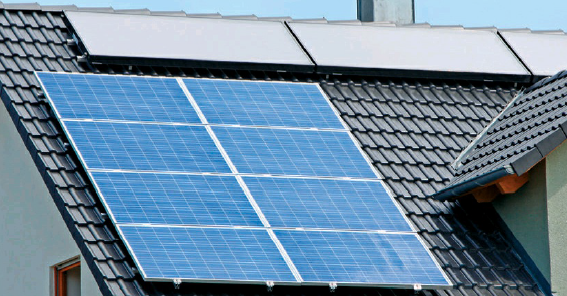
Advantages and Disadvantages of Solar in 2025: Your Complete Guide
Weigh the pros and cons of solar energy in 2025—savings, eco-benefits, and property boosts vs. costs, space, and weather challenges—for UK homes.
Advantages and Disadvantages of Solar in 2025: Your Complete Guide
Solar energy has surged in popularity across the UK, promising clean power, lower bills, and a greener footprint. But is it the right choice for your home in 2025? While solar panels offer impressive benefits—like slashing electricity costs and boosting property value—they come with drawbacks, such as high upfront costs and weather dependency. This guide dives deep into the pros and cons of solar energy, tailored for UK homeowners, with data-driven insights and practical considerations to help you weigh your options.
Why Solar Energy Matters in 2025
The UK’s push for net-zero emissions by 2050 has made solar a cornerstone of renewable energy adoption. With over 1.3 million homes already equipped with solar panels by 2025, advancements in panel efficiency and falling installation costs have fueled this growth. Yet, no energy solution is perfect. Factors like your location, roof suitability, and budget play a big role in whether solar delivers—or disappoints. Let’s break down the advantages and disadvantages to see where solar shines and where it falls short.
Advantages of Solar Energy
Solar power offers compelling benefits, especially in 2025, where technology and incentives align to make it more accessible. Here’s why homeowners are going solar:
1. Reduced Electricity Bills
A 4kW solar system, common for UK homes, generates around 3,400kWh annually—enough to cover most of a typical household’s 2,900kWh usage. With electricity prices at £0.24/kWh in 2025, that’s £816 saved yearly. Pair it with the Smart Export Guarantee (SEG), earning £0.15/kWh for excess power, and you could pocket an extra £75-£150 annually.
2. Environmental Impact
Solar cuts your carbon footprint significantly. A 4kW system offsets about 1.5 tonnes of CO2 per year—equivalent to planting 70 trees. In a country where domestic energy use drives 15% of emissions, this aligns with the UK’s climate goals.
3. Increased Property Value
Studies show solar-equipped homes sell for 4-7% more in the UK. For a £300,000 property, that’s a £12,000-£21,000 boost, often exceeding the £6,000-£8,000 installation cost. Buyers love energy-efficient upgrades, and solar’s a standout feature.
4. Low Maintenance
Solar panels require minimal upkeep—cleaning once or twice a year (£50-£100) and occasional inverter checks. With 25-year warranties standard in 2025, they’re built to last with little fuss.
| Advantage | Details | Estimated Benefit (4kW System) |
|---|---|---|
| Cost Savings | Lower bills + SEG earnings | £890-£966/year |
| Eco-Friendly | Reduces CO2 emissions | 1.5 tonnes CO2/year |
| Property Value | Boosts resale price | £12,000-£21,000 |
| Low Maintenance | Minimal upkeep costs | £50-£100/year |
Disadvantages of Solar Energy
Despite its appeal, solar isn’t flawless. Here are the challenges UK homeowners face in 2025:
1. High Initial Cost
A 4kW system costs £6,000-£8,000, including installation. While it pays off in 7-10 years, the upfront investment can strain budgets, especially without grants (e.g., the Boiler Upgrade Scheme doesn’t cover solar).
2. Weather Dependency
The UK’s cloudy climate limits output. A 4kW system might hit 3,400kWh in sunny Cornwall but drop to 2,800kWh in Scotland. Panels work in diffuse light, but efficiency dips on overcast days.
3. Space Requirements
A 4kW system needs 28 sq. metres of unshaded, south-facing roof space. Small or north-facing roofs—or those with chimneys and skylights—may not fit, forcing costly ground mounts (£1,000+ extra).
4. Energy Storage Costs
Solar generates most power during the day, not at night when you need it. Batteries (e.g., Tesla Powerwall) cost £5,000-£10,000, doubling your investment if you want off-peak self-sufficiency.
| Disadvantage | Details | Estimated Impact (4kW System) |
|---|---|---|
| High Cost | Upfront installation expense | £6,000-£8,000 |
| Weather Dependency | Reduced output in clouds | 20-30% less kWh |
| Space Needs | Requires large roof area | 28 sq. metres |
| Storage Costs | Batteries for night use | £5,000-£10,000 |
Comparing Solar Systems in 2025
Not all solar setups are equal. Here’s how system types stack up in advantages and disadvantages:
| System Type | Advantages | Disadvantages | Cost |
|---|---|---|---|
| Grid-Tied | Cheaper, SEG earnings | No power in outages | £5,000-£8,000 |
| Off-Grid | Full independence | High battery cost | £10,000-£15,000 |
| Hybrid | Backup + grid benefits | Complex, costly | £8,000-£12,000 |
Is Solar Worth It in the UK?
Solar’s value hinges on your situation. If you’ve got a south-facing roof in a sunny region like the South East, a £6,000 system could save £9,000+ over 25 years, factoring in SEG and rising energy costs. But in cloudier areas or with limited space, returns shrink. Add a battery, and costs climb—but so does self-sufficiency. Compare quotes, check roof suitability, and calculate payback (typically 7-12 years) to decide.
Final Thoughts on Solar Energy
In 2025, solar energy offers UK homeowners substantial advantages—cost savings, eco-benefits, and property value hikes—balanced against challenges like high costs and weather reliance. A 4kW system could save nearly £1,000 annually while cutting 1.5 tonnes of CO2, but you’ll need £6,000-£8,000 upfront and a suitable roof. Weigh your budget, location, and energy goals against these pros and cons. Ready to explore? Get a free quote today and see if solar’s your bright idea.